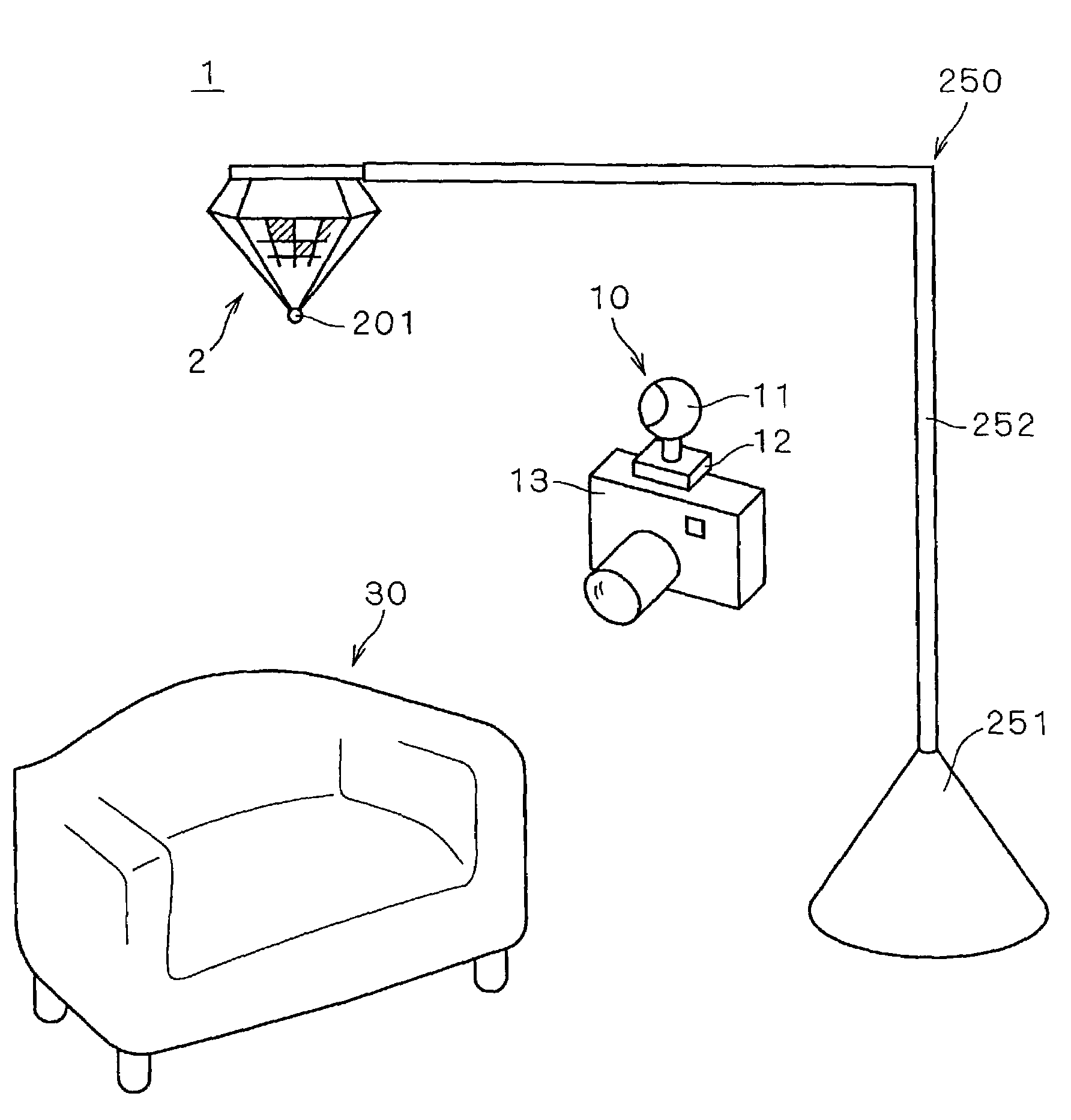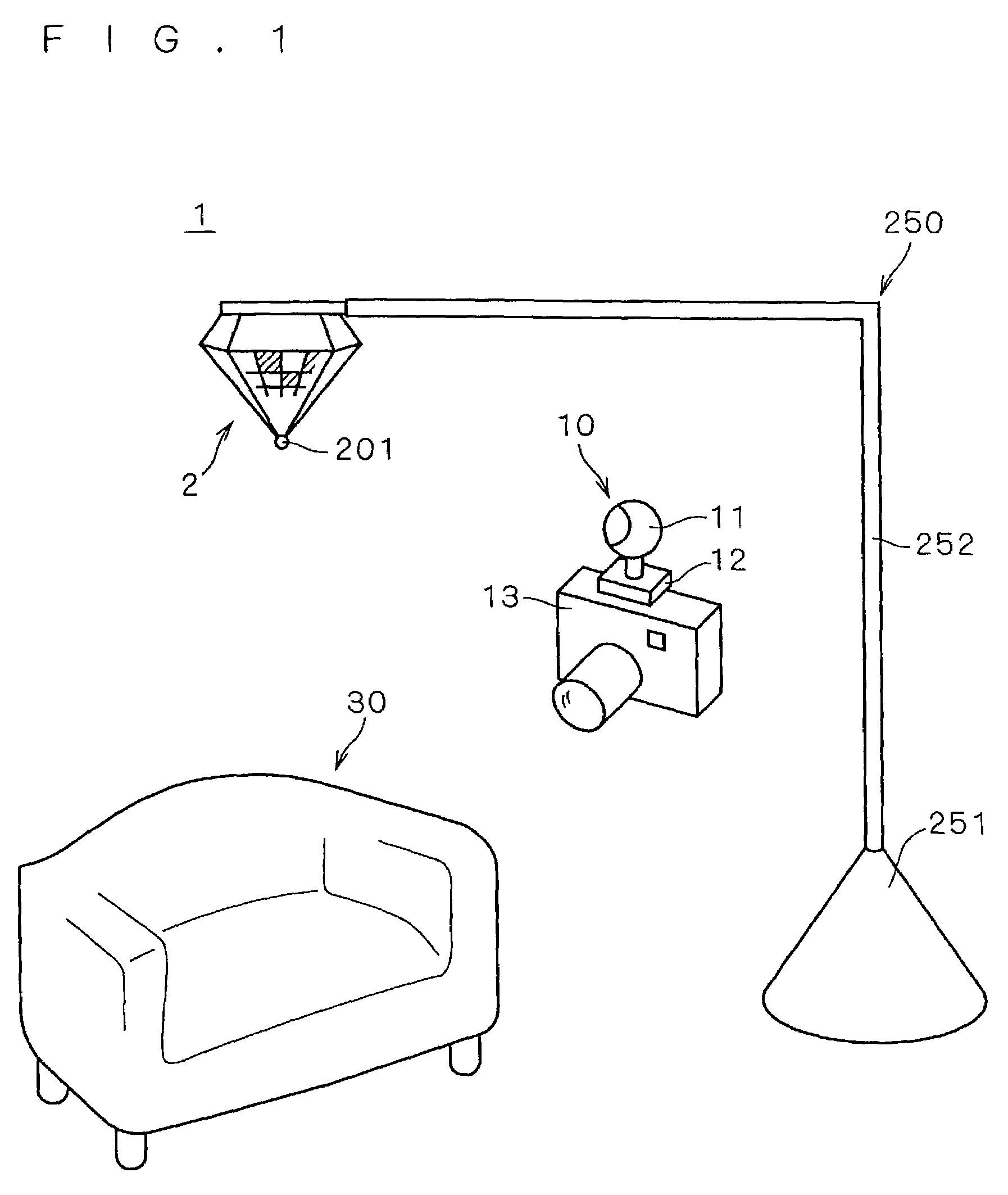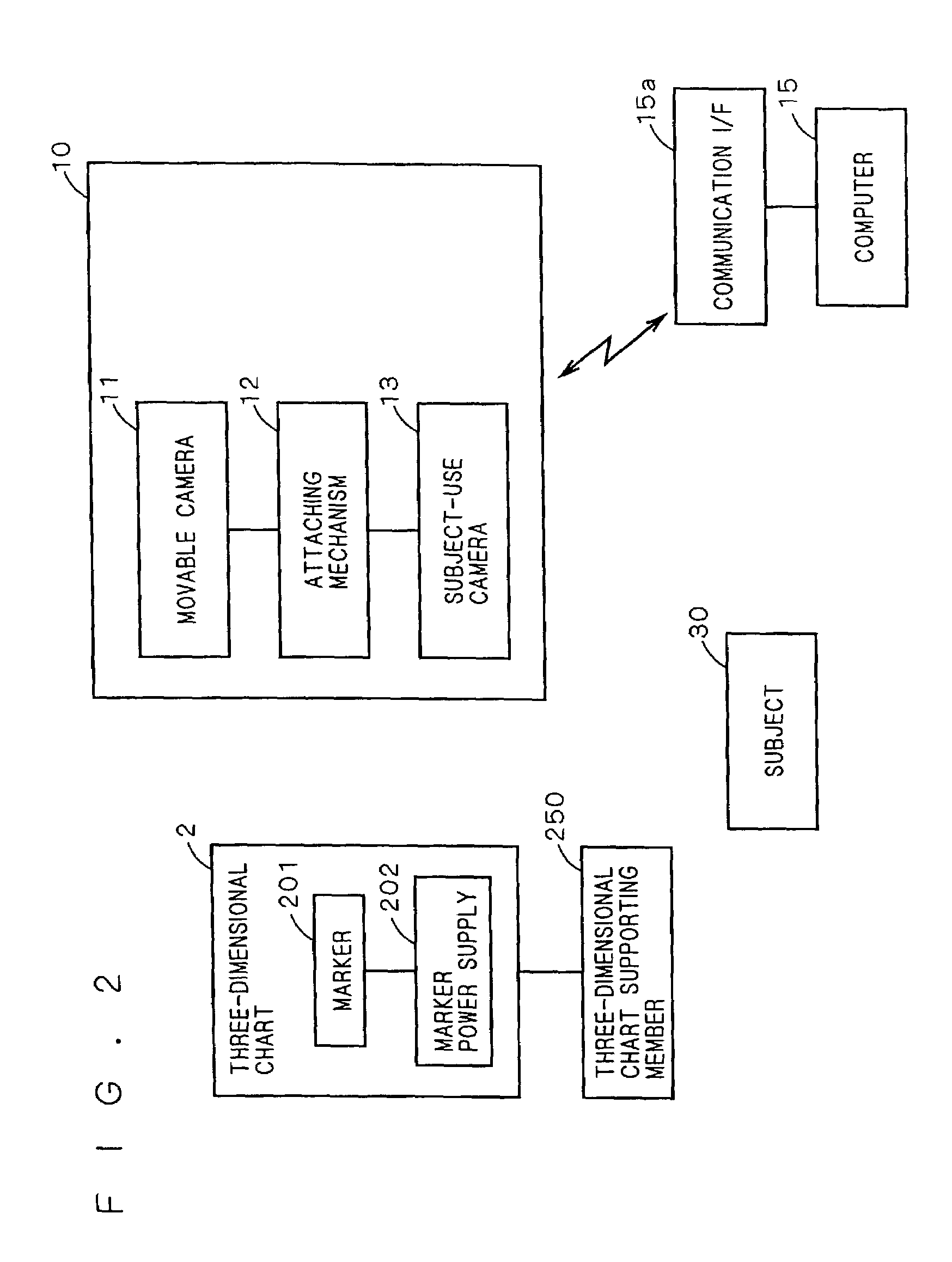Image pickup system employing a three-dimensional reference object
a pickup system and reference object technology, applied in the field of image pickup systems employing three-dimensional reference objects, can solve the problems of high cost of apparatus, large image-picking facilities, and high measurement accuracy, and achieve the effects of high measurement accuracy, wide movable range, and high precision
- Summary
- Abstract
- Description
- Claims
- Application Information
AI Technical Summary
Benefits of technology
Problems solved by technology
Method used
Image
Examples
first preferred embodiment
[0143]FIG. 1 is a drawing that shows a construction of an image-pickup system 1 (three-dimensional information generation system) that is achieved by the first preferred embodiment, and FIG. 2 is a block diagram that shows this image-pickup system 1. In FIG. 1, image-pickup system 1 is provided with a movable camera system 10 capable of picking up an image of a three-dimensional subject 30, and a camera-calibration-use three-dimensional chart 2 that is placed in the vicinity of subject 30 within a space including three-dimensional subject 30. Three-dimensional chart 2 is a reference object that has a known shape in the three-dimensional space, and constituted by a three-dimensional object in which a chart pattern is formed on each of the side faces of a main body having virtually a pyramid shape, as will be described later in detail. This three-dimensional chart 2 is suspended from a chart supporting member 250. This chart supporting member 250 is provided with an arm 252 having a r...
sixth preferred embodiment
[0484]The following description will discuss the sixth preferred embodiment of the present invention. In the fifth preferred embodiment, angle sensor 18 is fixed to subject-use camera 13; however, the method of detecting the absolute orientation with respect to a space is not limited to this. In the apparatus construction of the present preferred embodiment, angle sensor 18 is attached not to subject use camera 13, but to movable camera 11.
[0485]In the present preferred embodiment, although not shown in the Figure, angle sensor 18 is placed in a securing portion 114 (FIG. 4). FIG. 59 shows a block diagram of movable camera 11 in the present preferred embodiment, and FIG. 60 is a drawing that shows an essential portion of the information processing function of movable camera 11 from the viewpoint of hardware construction of movable camera 11. Moreover, FIG. 61 is a drawing that shows a flow of data in movable camera 11. Here, an essential portion of the information processing functio...
eleventh embodiment
11. Eleventh Embodiment
[0623]The following description will discuss an eleventh preferred embodiment of the present invention. In the present preferred embodiment also, a plurality of three-dimensional charts are placed on the periphery of subject 30, and it is possible to achieve a system which can construct a three-dimensional model with high measuring precision while maintaining a wide movable range. Here, the image pickup system in the present embodiment is virtually the same as the construction explained in the tenth preferred embodiment, and the detailed explanation thereof is omitted.
11>
[0624]FIG. 80 shows a block diagram that shows an inner function of movable camera 11. As shown in FIG. 80, in movable camera 11, a lens unit 110 and a two-dimensional light-receiving element 111 for photo-electric converting a two-dimensional image formed by this lens unit 110 are integrally housed in a spherical unit 116. Two-dimensional light-receiving element 111 is constituted by a CCD ar...
PUM
 Login to View More
Login to View More Abstract
Description
Claims
Application Information
 Login to View More
Login to View More - R&D
- Intellectual Property
- Life Sciences
- Materials
- Tech Scout
- Unparalleled Data Quality
- Higher Quality Content
- 60% Fewer Hallucinations
Browse by: Latest US Patents, China's latest patents, Technical Efficacy Thesaurus, Application Domain, Technology Topic, Popular Technical Reports.
© 2025 PatSnap. All rights reserved.Legal|Privacy policy|Modern Slavery Act Transparency Statement|Sitemap|About US| Contact US: help@patsnap.com



